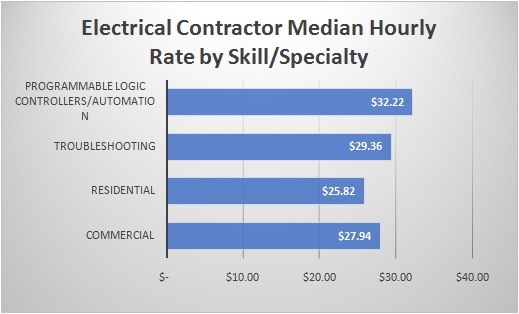Suite Metering for Multi-Unit Residential Buildings with Steven Lupo

December 17, 2021
By Blake Marchand
This is the third article we’ve done in this series with Trilliant Canada Managing Director, Steven Lupo. In the first article we looked at Trilliant’s Libra Smart Meter, while the second article focused on Advanced Metering Infrastructure and the broader industry impact of technology. Here Lupo discusses smart building applications and suite metering for multi-unit residential buildings (MURBs), providing some background information on how metering has traditionally been done, as well as the technologies that Trilliant is working with that improve on previous iterations with enhanced functionally to allow for new applications, e-mobility (EV charging), solar, as well as beyond the building envelope to involve smart city applications.
Background
Multi-unit residential building electricity billing was traditionally done by square footage or some other form of allocation per unit, which, as buildings got larger and energy prices increased, led to more challenges for property owners as well as residents with respect to fair billing.
“As the cost of the commodities increased the issue became more apparent: Fair and equitable means to invoice people for their actual consumption,” said Lupo. That became the main issue, he explained, detailing the background of suite and sub metering in multi-residential units.
Lupo explained that over the years, Trilliant gained a lot of expertise working with social housing entities and commercial buildings, as well as some work on the utility side. “This led to the adoption of various technologies at the suite level, and started first at the building management level: the building envelope, the main commodity services, the central plants, the parking garages; the key areas where there could be a ripe opportunity to implement energy efficiency measures.”
Initially the technology focus was to improve energy efficiencies at the various aforementioned building levels.
“As the costs of commodities continued to increase and expectations of suite owners and tenants evolved, so did the need for individual accountability within these buildings,” said Lupo, noting that actual billing based on consumption became a selling feature for developers and property managers.
“There were a number of years where people felt they were being unfairly charged for someone else’s consumption.”
Fast Forward
Currently, Trilliant has added its Smart Building technology to over 500 buildings and is a supplier across Canada and the U.S. for its smart building platform which consists of hardware, networks and a host of professional project, data and field services that complement the solution. “Traditionally we supplied the base metering, network and hosted services that are needed for electrical, water and thermal metering. Today, we are utilizing that same utility-grade network as a backbone for new applications including leak detection, integrating e-mobility and a host of new sensors within and exterior to the building envelope.”
 Lupo noted there are a lot of retrofit opportunities with respect to EV charging. “It’s not easy to run communications cabling to enable monitoring and control of EV chargers, and most are equipped with WiFi radios that do not offer the required range. This is where our comprehensive wireless solution with utility-grade security really shines.”
Lupo noted there are a lot of retrofit opportunities with respect to EV charging. “It’s not easy to run communications cabling to enable monitoring and control of EV chargers, and most are equipped with WiFi radios that do not offer the required range. This is where our comprehensive wireless solution with utility-grade security really shines.”
Adding EV charging to existing buildings, while tying it back to individual units, does provide its challenges. “We’re tied in nicely with electrical contracting companies and with EV services companies to enable that and to ensure equitable billing of EV infrastructure, as well.”
Suite Metering
With respect to the metering of each suite individually, Lupo said, “We completely disrupted the industry with our MC5 panel meter. With our technology, 12 suites can be measured by a device that is 17” by 9”. It’s a very condensed setup that allows for the installation of the metering in closets or integrated into panels as opposed to the large metering rooms filled with socket-type meters.
“Every condo in America and Canada is pretty much designed the same way; you have a sub panel that feeds the suites on that floor, a few above and a few below, depending on the size – in general that’s the way it works. This panel-type meter is designed to very efficiently and neatly tuck into these electrical panels.”
Looking at the traditional socket meter, Lupo explained, there was another issue suite metering technology inadvertently solved. The amount of real estate those socket meters would take up accounted for lost revenue for developers. Meter rooms/centres were the first attempt to individual meter units. Lupo noted the practice is still being deployed in B.C.
“As usual in our industry, there is sometimes a hesitancy to change and adapt and consider new technology. Trilliant acquired this panel metering technology and are adding additional communications and application capabilities. More important than just the meter, the solution serves as the base infrastructure for an intelligent Smart Building platform. It provides accountability to the right suite owners, so socially it’s a responsible thing to do – but it really is a backbone for future applications like we’re seeing with the EV chargers and leak detection, to start.”
He explained that one panel could be metering for 10 suites, for example, with two slots on the meter itself used for EV chargers. It’s very adaptable including the voltage levels, going up to 600 volts and all the way down to 120 volts.
The panel metering can also be used at the solar panel level to manage performance of a solar array. “Its important to manage how each solar array is performing, and this technology is perfectly adaptable to that,” noted Lupo.
Communication
When it comes to in-building communication, Lupo said that has traditionally been done via wired or Power Line Carrier (PLC) which has the unique ability to hop through transformers.
As building technology improved and the customer experience become paramount, the limitations of PLC became apparent. To mitigate that, Trilliant pivoted the technology to low-power WAN, which they call Trilliant SecureReach®. “This technology is perfectly suited for in-building and Smart City applications. It has been tested beyond 30-40 floors and is able to get signal from the roof all the way down to parking garage. It’s a technology we’re already utilizing on the water metering side and electric side, and now we’ll be doing our first EV chargers this year,” said Lupo.
“It’s pretty exciting. The developers, the electrical contractors are quite happy. If you can imagine any given suite in Vancouver, Toronto, New York…if you’re going to do it right, you’re going to want to measure hot and cold water, you’re going to want to measure thermal consumption, you’re going to want to measure the electricity consumption to the suite; those devices, traditionally, need to be wired up and even if you’re daisy chaining the devices and not doing home runs, it’s a ton of cabling. And with cabling in our experience, it looks great when you put it in but is not reliable over the long term predominantly due to its existence in shared spaces.”
Various service providers will ultimately have to access the cabling which can compromise the integrity of the system.
Maintaining that wiring can be a challenge and can be costly, which is why the wireless technology was important for Trilliant to pursue.
Discussing the meter components, Lupo said, “Everything is 100% backwards compatible. These meters are two parts, they have a rear base assembly and then the front panel. The front panel does change, it has the wireless NICs on board, but the back box is exactly the same enabling a seamless upgrade to legacy systems across the country.”
Empowering Property Management 2.0
“What started out as an opportunity for social and fiscal responsibility around management of energy, can quickly adopt to multiple buildings across a portfolio of buildings. Many of our customers have property management companies that have buildings across the country – it’s very important for property management companies to benchmark buildings and monitor various critical aspects remotely.”
This allows property managers to compare building performance and set standards for optimal performance, based on various factors in the building’s construction. With some analytics, predictive maintenance of central plant and other services can also be integrated.
There are a lot of different factors when it comes to consumption right down to which direction the building is facing but generally the biggest is cladding. For example, the more glass a building has, the less efficient it’s going to be compared to a building with more brick.
The general goal of suite metering is to present each unit the same as an individual home account. There may be some difference in terms of services provided, “but in terms of the data flow, that management of the account, all of the additional data that comes with AMI 2.0, this is a means for them to extend into those markets. This applies to any market or distribution territory that has a significant amount of multi residential content.”
Beyond the Building Envelope
“When you think about the intersection of smart city, smart building and AMI, the entities responsible for those are typically municipalities and utilities. The technology that we employ does not limit itself just to the building. Trilliant SecureReach® technology that has been deployed spans from buildings and into open spaces enabling parking and lighting control solutions.”
He explained there is a clustering effect – which means once you have enough buildings deployed with the communications technology, it’s able to communicate over such a distance that you don’t even need infrastructure in every single building. Devices and sensors from one building are able to connect to access points in the next building.
“We have buildings in Japan today that have 400-500 meters in between them and they are communicating with the access points in the building next door. If you step back and look at it from the 5,000-foot level, you’ve now created a very intricate network that can span across multiple buildings, providing natural redundancies,” he explained. “You’ve got immersive connectivity, so you can step outside the building into street lighting control, you can pick up the EV chargers; there are a multitude of applications now once you’re immediately outside the building envelope where you have this connectivity.”
Looking at the potential of microgrids/nanogrids, Lupo said that “MURBs are perfect candidates for things like distributed generation – and I think there’s a bit of a missed opportunity in Toronto with the huge spike in multi-residential that we have had there over the years. Distributed generation should have been a key part of that.”
There are a number of aspects that contributed to that lost opportunity, Lupo said. For example, “not just generating power, not just having back electricity; but domestic hot water coming off these co-gen machines and the ability to run your own generation during periods of peak pricing was the main driver when we did it for Regent Park [in Toronto] and a few other developments years ago.”
Beyond that is capacity and storage. “This is going to be tremendous. Buildings have a unique footprint due to their vertical nature to have that type of storage capacity on standby.”
In comparison to the Tesla Power Wall that stores backup power for an individual house, “when you think about the capabilities in buildings,” he explained, “you can power entire city blocks with a few buildings. I think there’s going to be some really interesting ideas on exactly how to do that.”
Lupo added there is greater focus on managing buildings better, particularly with respect to MURBs, given how much energy they consume.
He also sees increased collaboration between municipalities and utilities as a game-changing element when it comes to developing pragmatic smart city applications.










![Guide to the Canadian Electrical Code, Part 1[i] – A Road Map: Section 52 — Diagnostic imaging installations](https://electricalindustry.ca/wp-content/uploads/2022/11/Guide-CE-Code-2.png)






